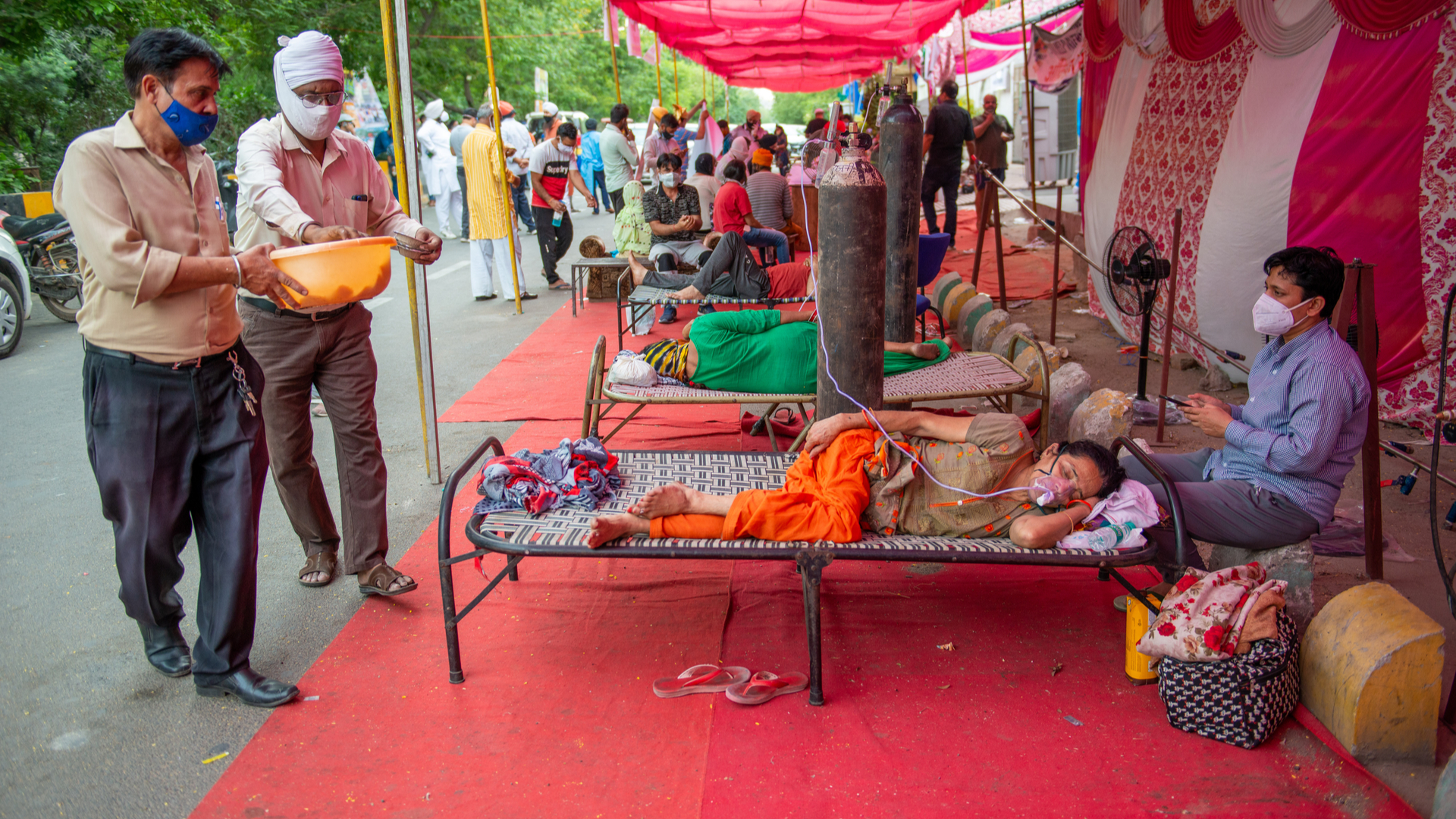
We are all aware that India is currently facing one of the worst public health emergencies that it has ever witnessed. Switch on the television or check a WhatsApp group, every Indian seems to be literally clamoring for that one oxygen cylinder or running after that last ICU (Intensive Care Unit) bed that may be available. Given the nightmare that an average Indian finds itself in, it is but natural to conclude that the entire crisis is a result of a deplorable policy response to the pandemic. However, to a public health analyst, this may well be the tip of an Iceberg. Substantively speaking, the pandemic has merely exposed the underlying fault lines of a fractured public health system which has crumbled over decades of neglect & under-investment. This brings us to the larger question- what really went wrong with India?
To unpack this question, from a public health perspective, here are 5 glaring realities about our healthcare system that every Indian citizen needs to know as they support communities, drive policies, or hold their governments accountable to their public health manifesto.
First, with a burgeoning Indian population that contributes to literally every 6th person in the world, it is shocking to learn that we spend less than 1.3% of our GDP (Gross Domestic Expenditure) as public expenditure on healthcare (National Health Profile, 2019). One government after the other has harped on the need for increasing our public investment to at least 2.5% of the GDP, including India’s latest National Health Policy (National Health Policy, 2017). Unfortunately, these paper commitments have never reflected in actual budgetary allocations.
Second, if we want to assess the shortage of trained public health workforce in the country, just compare the density of allopathic doctors, nurses & midwives who are active in the Indian labour market, which is 17 per 10,000 persons , as against the WHO (World Health Organization) recommended threshold of 44.5 doctors, nurses and midwives per 10,000 persons (Karan et al., 2021). In this light, it is also important to note that MBBS (medical graduates) seats have jumped upwards by 48% from 54,348 in 2014-15 to 80,312 in 2019-20. Yet, on an average, a government doctor in India attends to nearly 11,000 people, which is 10 times of what the WHO mandates! (National Health Profile, 2018).
"Substantively speaking, the pandemic has merely exposed the underlying fault lines of a fractured public health system which has crumbled over decades of neglect & under-investment."

Third, it is rather disheartening to know that Indians cover nearly 65% of the total healthcare expenses from their own pockets. (National Health Accounts, 2016) It is further worrying to note that each year, nearly 60 million people are pushed below the poverty line due to catastrophic health expenditure (Selvaraj et al., 2018) . And this reality when superimposed with the horrors of the ongoing pandemic, can only make us imagine the scale of impact that COVID-19 would have had on millions of Indian households.
Fourth, with the Human Development Report, ranking India 155th on bed availability out of a total of 167 countries, India offers merely 5 beds for every 10,000 Indians. (Human Development Report, 2020) Moreover, it is estimated, that before the pandemic struck, India only had about 95,000 ICU (Intensive Care Unit) beds with merely 50,000 ventilators in total!
Fifth, in the context of the current crisis, to enquire whether the government was guided by epidemiological modelling exercises or genomic surveillance that could have predicted the second wave of COVID-19, and if this prior knowledge was used to inform the pandemic preparedness of the country in 2021. This is particularly concerning considering the fact, that Indian SARS-CoV-2 Genome Sequencing Consortia (INSACOG), did forewarn the government back in early March, about the spread of new Coronavirus variants that were highly contagious & had the potential to swamp the country. Similarly, whether there was an institutional process in place to seek public health guidance on policy decisions like imposing or not imposing a lockdown.
In conclusion, we are at a critical juncture in modern Indian history. We have an opportunity to learn from the brutal experience of this pandemic, and collectively drive the public health agenda to the very top of India’s policy priority. Finally, the most important contribution that we can make in the coming times is to ensure that this pandemic marks a watershed in reclaiming & strengthening our long neglected public health systems.
More from Dr. Ananya Awasthi here.
Gaurs, P. (2021). Volunteers serving food to relatives of COVID-19 patients. Shutterstock. https://www.shutterstock.com/image-photo/ghaziabad-uttar-pradesh-india-may-4-1968080533
United Nations Development Programme. (2020). Human Development Report, 2020. The Next Frontier Human Development and the Anthropocene. https://report.hdr.undp.org/
Kapoor, G., Hauck, S., Sriram, A., Joshi, J., Schueller, E., Frost, I., … & Nandi, A. (2020). State-wise estimates of current hospital beds, intensive care unit (ICU) beds and ventilators in India: Are we prepared for a surge in COVID-19 hospitalizations?. medRxiv.
Karan, A., Negandhi, H., Hussain, S., Zapata, T., Mairembam, D., De Graeve, H., Buchan, J., & Zodpey, S. (2021). Size, composition and distribution of health workforce in India: Why, and where to invest? Human Resources for Health, 19(1), 39. https://doi.org/10.1186/s12960-021-00575-2
Karan Thapar. (2021). Full Text: ‘Govt Should Have Acted on INSACOG Warning’, Rakesh Mishra Says. The Wire. https://science.thewire.in/health/full-text-govt-should-have-acted-on-insacog-warning-rakesh-mishra-says/
Ministry of Health and Family Welfare, Government of India, New Delhi. (2019). National Health Accounts Estimates for India, 2016. http://nhsrcindia.org/sites/default/files/FINAL%20National%20Health%20Accounts%202016-17%20Nov%202019-for%20Web.pdf
Ministry of Health & Family Welfare, Government of India. (2017). National Health Policy 2017. https://www.nhp.gov.in/nhpfiles/national_health_policy_2017.pdf
Central Bureau of Health Intelligence. (2018). National Health Profile India 2018 http://www.cbhidghs.nic.in/WriteReadData/l892s/Before%20Chapter1.pdf
Central Bureau of Health Intelligence. (2019). National Health Profile India 2019. http://www.cbhidghs.nic.in/WriteReadData/l892s/8603321691572511495.pdf
Selvaraj, S., Farooqui, H. H., & Karan, A. (2018). Quantifying the financial burden of households’ out-of-pocket payments on medicines in India: a repeated cross-sectional analysis of National Sample Survey data, 1994–2014. BMJ open, 8(5).
HPHR.org was designed by ComputerAlly.com.
Visit HPHR’s publisher, the Boston Congress of Public Health (BCPH).
Email communications@bcph.org for more information.

Click below to make a tax-deductible donation supporting the educational initiatives of the Boston Congress of Public Health, publisher of HPHR Journal.![]()